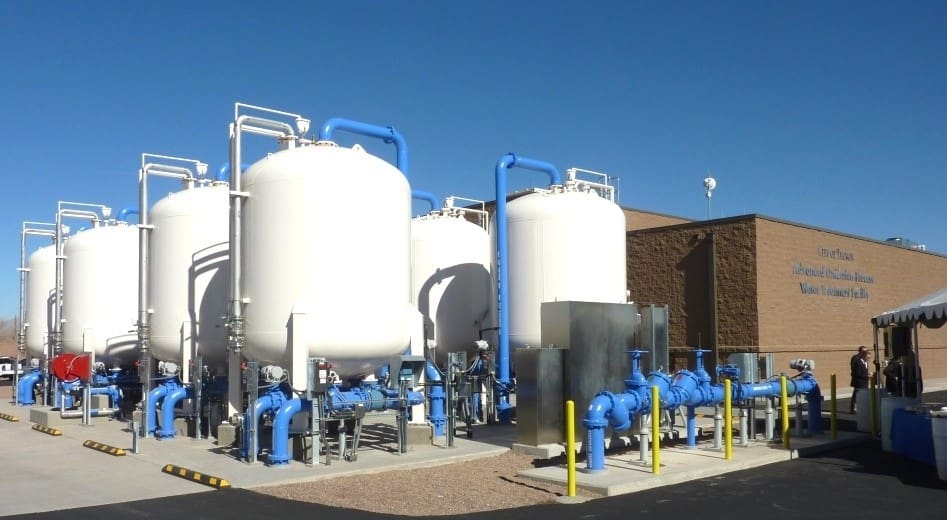M270 Waste Management: An Innovative Solution for Managing Harmful Waste
Advanced Methods for Reliable PFAS Contamination Removal
The consistent difficulty of PFAS contamination requires the exploration of innovative removal approaches that can properly resolve these harmful substances. Innovative technologies, such as advanced oxidation processes and various adsorption techniques, have arised as encouraging options in mitigating PFAS from impacted atmospheres.
Recognizing PFAS Features
Although per- and polyfluoroalkyl compounds (PFAS) have been widely used in different industrial and consumer items because of their special buildings, their determination in the environment poses substantial challenges to public wellness and security. PFAS are a group of artificial chemicals defined by a carbon-fluorine bond, among the best chemical bonds known, which adds to their extraordinary stability and resistance to destruction. This stability allows PFAS to collect in the environment and living microorganisms, resulting in possible unfavorable health results.
These exact same buildings contribute to their environmental perseverance, as PFAS do not conveniently damage down with all-natural processes. Comprehending the chemical residential properties of PFAS is vital for developing effective methods to take care of and minimize their ecological impact.
Innovative Remediation Technologies
The perseverance of PFAS in the setting has actually stimulated the growth of cutting-edge removal innovations focused on efficiently eliminating these pollutants from impacted environments. Among the most appealing approaches are advanced oxidation procedures (AOPs), which make use of powerful oxidants to break down PFAS substances into less harmful materials. AOPs can be customized to target certain PFAS structures, boosting their effectiveness.
Another arising modern technology is using adsorption media, such as activated carbon and ion exchange materials, which can precisely capture PFAS from infected water. These materials have actually revealed significant elimination effectiveness, although regular replacement and regrowth are required to keep performance.
Membrane layer filtering techniques, consisting of reverse osmosis and nanofiltration, are also obtaining grip in PFAS remediation. These techniques can efficiently divide PFAS from water, supplying a viable remedy for treating infected sources. In addition, thermal treatment techniques, such as incineration, can decompose PFAS right into non-toxic byproducts, though they need mindful administration to regulate emissions.
Jointly, these cutting-edge remediation modern technologies represent substantial improvements in the continuous battle versus PFAS contamination, offering different approaches to restore damaged atmospheres and shield public wellness.

Bioremediation Techniques
Bioremediation strategies supply an encouraging method to addressing PFAS contamination by taking advantage of the natural capacities of microorganisms to weaken these consistent substances (m270 waste management). This method entails using microorganisms, fungi, and various other microbes that can metabolize or change PFAS substances right into less hazardous by-products
Current improvements in molecular biology and environmental microbiology have actually boosted our understanding of microbial neighborhoods and their possible roles in PFAS degradation. Scientists are actively checking out details strains of germs, such as Pseudomonas and Bacillus, which have actually demonstrated the capability to break down particular PFAS compounds.
In situ bioremediation methods, where microbes are stimulated directly in infected settings, can be particularly efficient. This strategy typically entails the application of nutrients or electron donors to promote microbial growth and task. In addition, ex situ methods, such as bioreactors, permit controlled problems that can maximize destruction rates.
In spite of the pledge of bioremediation, obstacles continue to be, consisting of the intricate nature of PFAS compounds and the need for substantial area screening - m270 waste management. Proceeded study and growth will be critical to improve these techniques and assess their effectiveness in diverse environmental contexts
Adsorption and Filtering Techniques
Dealing with PFAS contamination frequently includes utilizing adsorption and filtering techniques, which are created to eliminate these consistent chemicals from water and soil. Among the various methods, triggered carbon adsorption is widely utilized due to its high surface area and porosity, enabling effective capturing of PFAS particles. Granular turned on carbon (GAC) systems are specifically preferred for dealing with large volumes of infected water, while powdered turned on carbon (SPECIAL-INTEREST GROUP) can be utilized for smaller-scale applications.
Ion exchange resins additionally show promise in PFAS elimination, read review working by exchanging PFAS ions with less unsafe ions in the water. This approach has demonstrated performance in focusing PFAS compounds, facilitating their succeeding removal. In addition, membrane layer filtration techniques, such as reverse osmosis and nanofiltration, run by utilizing semi-permeable membranes to different PFAS from water, properly minimizing navigate to this website their concentrations.
While these approaches work, they should be meticulously picked based on the specific PFAS substances present and the ecological context. Continuous improvements in materials scientific research and engineering are causing the advancement of novel adsorbents and filtering systems that improve elimination effectiveness and lower operational prices, thereby improving overall remediation initiatives.
Regulatory and Plan Considerations
How can efficient regulatory frameworks boost the administration of PFAS contamination? Detailed policies are vital to make sure a worked with and robust response to the difficulties positioned by per- and polyfluoroalkyl substances (PFAS) Laws can establish clear guidelines for monitoring, reporting, and remediating PFAS-contaminated websites, fostering liability among industries and public entities. (m270 waste management)

On top of that, economic motivations and grants can be incorporated right into policies to encourage the adoption of sophisticated removal innovations. Policymakers must likewise focus on r & d, making certain that arising approaches for PFAS removal are verified and implemented properly.
Furthermore, public understanding and interaction are essential components of any kind of regulatory strategy, empowering areas to promote for their health and wellness. Ultimately, a well-structured governing environment will certainly not just improve the management of PFAS contamination yet additionally promote sustainable practices that secure future generations.
Verdict
In recap, the intricacy of PFAS contamination demands the fostering of innovative remediation techniques. visit this site right here Proceeded research and development in this field continue to be vital to dealing with the challenges positioned by PFAS contamination.